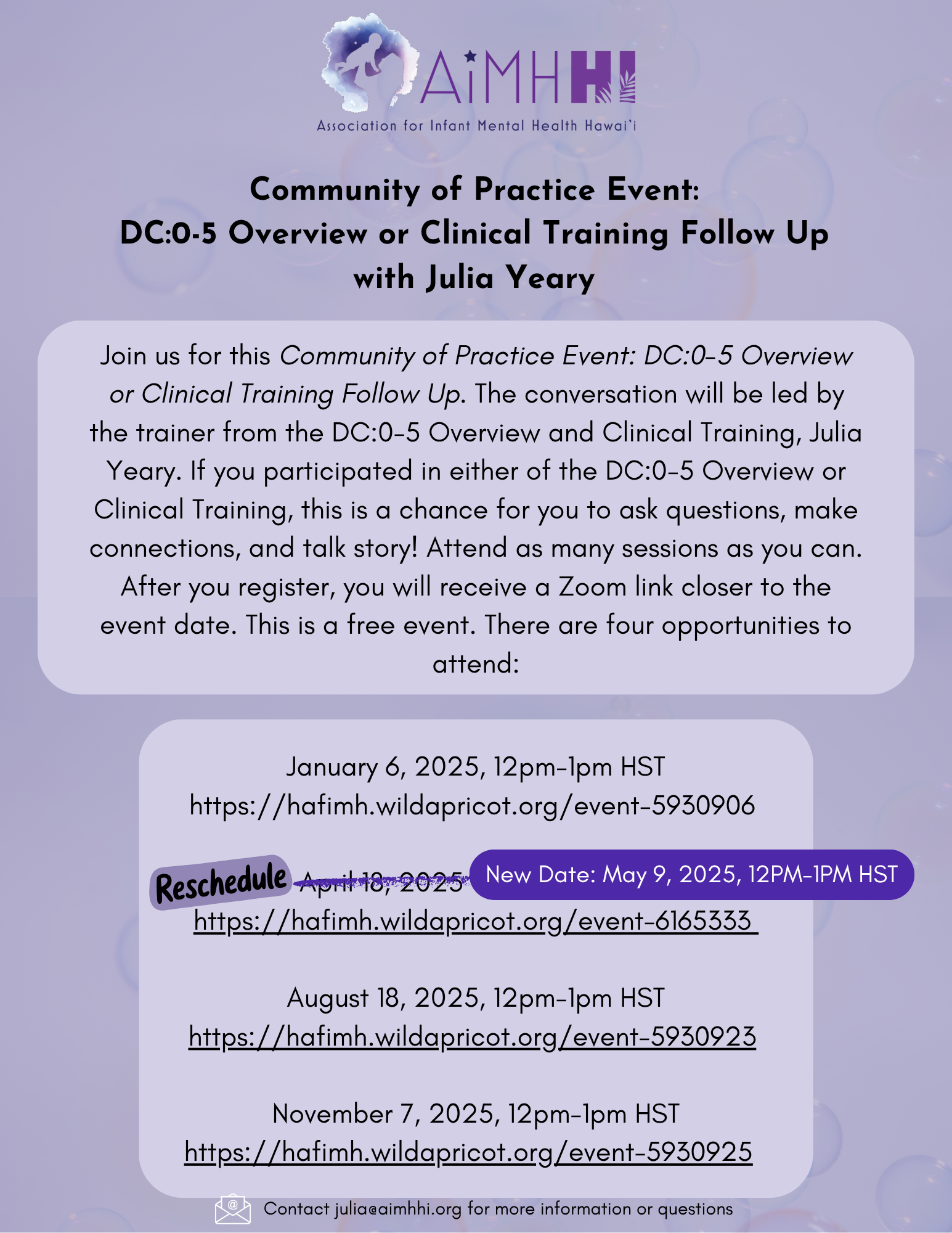
Hawaiʻi’s DC:0-5 Crosswalk
Diagnostic Classification of Mental Health and Developmental Disorders of Infancy and Early Childhood (DC:0-5™)
What is the DC:0-5?
The DC:0-5 is a diagnostic classification manual for mental health and developmental disorders of infancy and early childhood. The manual supports clinicians in the diagnosis of these disorders in young children through a systematic and multiaxial approach. The DC:0-5 covers eight categories of disorders with 42 possible diagnoses for mental health and developmental disorders of infancy and early childhood. Each disorder includes a diagnostic algorithm, diagnostic features, and other information to support appropriate diagnosis. The multiaxial approach includes assessment tools and criteria across five axes.
Med-QUEST Division Memo
The purpose of this memorandum is to provide guidance to QUEST Integration (QI) Health Plans and providers engaged in mental health assessment, diagnosis, and treatment of infants, toddlers, and preschool children. Specifically, this memo outlines best practices for providers utilizing the DC:0-5™; provides a crosswalk that maps DC:0-5™ assessment results to existing diagnostic codes to support coding and billing; and provides information to providers on how to access free training resources on the DC:0-5™ tool. QI Health Plans are asked to disseminate these clinical practice guidelines to their provider networks, to encourage tool adoption, and to inform providers of available training.
How do you use the DC:0-5 Crosswalk?
After a clinician has appropriately used the tools in the DC:0-5 manual to assess and diagnose a young child, they can use the DC:0-5 Crosswalk to map that diagnosis to common classification systems used for billing and reimbursement of services, such as the Diagnostic and Statistical Manual of Mental Disorders (DSM-5) and the International Classification of Diseases (ICD-10). The DC:0-5 Crosswalk offers clinicians an easy way to map a DC:0-5 diagnosis to the comparable DSM-5 diagnosis and ICD-10 diagnosis code (e.g., F codes). This mapping to common classification systems is important because these codes are often used to document and bill for services delivered.
The following Crosswalk can be used to assist clinicians working with children 0-5 years by providing a pathway to map DC:0-5 diagnoses onto comparable DSM-5 and ICD-10 diagnostic codes. This tool can be used in conjunction with the accompanying case studies, which walk through examples of using the DC:0-5 multiaxial approach to appropriately diagnose young children experiencing symptoms within the Trauma, Stress, and Deprivation Disorders category.
Crosswalk
2025 Hawaiʻi DC:0-5TM Crosswalk
DC:0-5™ Training Opportunities
DC:0-5™ Community of Practice
Join other colleagues who have completed the DC:0-5 training across the State to share, learn, and reflect on how you can integrate the DC:0-5 into your practice. Email info@aimhhi.org for more information.
DC:0-5 Clinical Trainings
This comprehensive training is open to those working with infants and young children, focusing on assessment, diagnosis, and case formulation using the DC:0-5 manual.

DC:0-5™ Supportive Resources
(Coming Soon, Stay Tuned)





